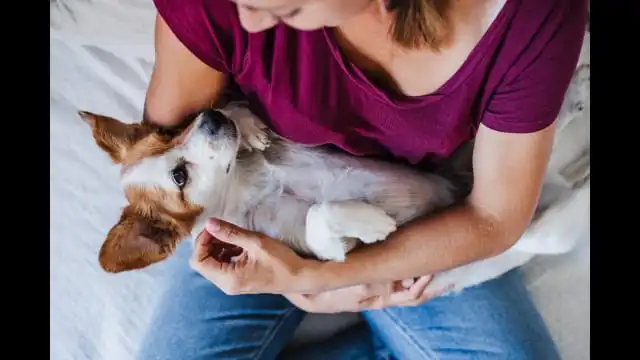
Researchers have recently explored whether dogs can effectively use soundboards to communicate, akin to responding to spoken words. Led by Prof. Federico Rossano from the University of California San Diego, the study, published in PLOS ONE, involved 59 dogs trained to use a soundboard with pre-recorded words such as “out/outside,” “play/toy,” and “food/eat/dinner/hungry.”
The study was conducted in two phases. In the first experiment, a researcher covered the buttons on the soundboard with colored stickers to hide their labels. Another researcher, unaware of which button was which and unable to hear the words, pressed a button randomly while recording the dogs’ behaviors. In the second experiment, dog owners either pressed the buttons or said the words themselves, and the dogs’ reactions were compared to the previous experiment.
The findings indicated that dogs responded to the play/toy button by displaying play-related behaviors approximately seven times more often than to other buttons. They also showed appropriate behaviors for the out/outside button, though there was no significant increase in food-related behaviors for the food button. Notably, these responses were consistent regardless of whether the buttons were pressed by a researcher or the owner, suggesting that the dogs were indeed responding to the soundboard’s pre-recorded audio rather than external cues.
Prof. Clive Wynne from Arizona State University considered the findings to be modest, emphasizing that while the study confirmed dogs respond to verbal cues, it did not reveal anything particularly novel. On the other hand, Dr. Mélissa Berthet from the University of Zürich viewed the study as an important preliminary step. She highlighted that it addressed skepticism about whether dogs were reacting to the audio from the soundboard rather than to their owners’ actions.
Overall, the research sets the groundwork for future studies to determine if dogs can use soundboards for more complex communication and provides insights into the evolving ways humans and dogs might interact.















